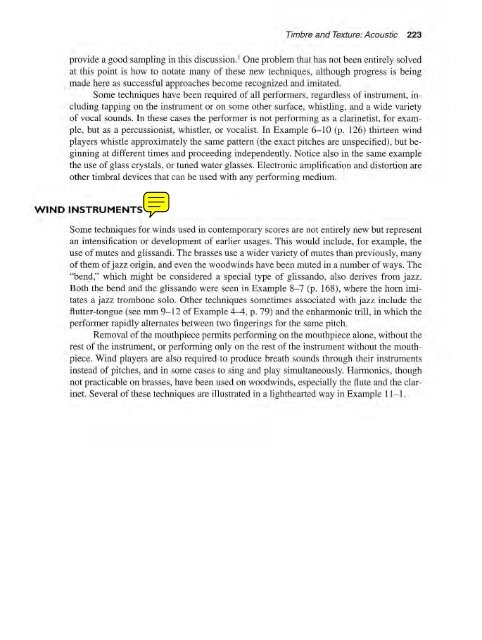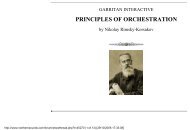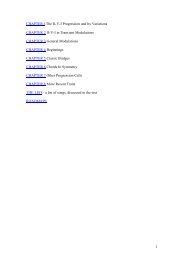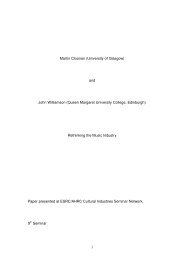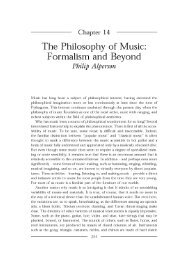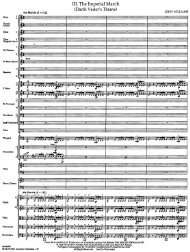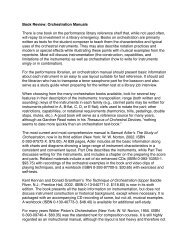TWENTIETH- - Synapse Music
TWENTIETH- - Synapse Music
TWENTIETH- - Synapse Music
You also want an ePaper? Increase the reach of your titles
YUMPU automatically turns print PDFs into web optimized ePapers that Google loves.
Timbre and Texture: Acoustic 223<br />
provide a good sampling in this discussion. l One problem that has not been entirely solved<br />
at this point is how to notate many of these new teclmiques, although progress is being<br />
made here as successful approaches become recognized and imitated.<br />
Some techniques have been required of all performers, regardless of instrument, including<br />
tapping on the instrument or on some other surface, whistling, and a wide variety<br />
of vocal sounds. In these cases the performer is not perfonning as a clarinetist, for example,<br />
but as a percussionist, whistler, or vocalist. In Example 6-10 (p. 126) thirteen wind<br />
players whistle approximately the same pattern (the exact pitches are ullspecified), but beginning<br />
at different times and proceeding independently. Notice also in the same example<br />
the use of glass crystals, or tuned water glasses. Electronic amplification and distortion are<br />
other timbral devices that can be used with any performing medium.<br />
WIND INSTRUMENTS<br />
Some techniques for winds used in contemporary scores are not entirely new but represent<br />
an intensification or development of earlier usages. This would include, for example, the<br />
use of mutes and glissandi. The brasses use a wider variety of mutes than previously, many<br />
of them of jazz origin, and even the woodwinds have been muted in a number of ways. The<br />
"bend," which might be considered a special type of glissando, also derives from jazz.<br />
Both the bend and the glissando were seen in Example 8-7 (p. 168), where the hom imitates<br />
a jazz trombone solo. Other techniques sometimes associated with jazz indudc the<br />
flutter-tongue (see mm 9-12 of Example 4-4, p. 79) and the enharmonic trill, in which the<br />
penormer rapidly alternates between two fingerings for the same pitch.<br />
Removal of the mouthpiece permits performing on the mouthpiece alone, without the<br />
rest of the instrument, or perfonning only on the rest of the instrument without the mouthpiece.<br />
Wind players are also required to produce breath sounds through their instruments<br />
instead of pitches, and in some cases to sing and play simultaneously. Harmonics, though<br />
not practicable on brasses, have been used on woodwinds, especially the flute and the clarinet.<br />
Several of these techniques are iIIustrated in a lighthearted way in Example 11-1.


